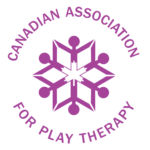Understanding Traumatized Children and Applying PT Tools June 12-13
Overview:
Many children and adolescents are referred for therapy because they have experienced a traumatic event or a series of events. This workshop will define the various types of trauma including those considered to be complex as well as other disorders that are trauma-based. It will provide an overview of trauma symptoms from infancy through adolescence emphasizing the types of post-traumatic play seen in homes, classroom and in the playroom. The central role of assessing the symptoms of trauma experienced by young, school aged including and adolescent clients and their families using a variety of play based, standardized and non-standardized measures will be explored. A framework widely used for identifying three stages of trauma- specific treatment will be introduced so that the therapist can make informed decisions about what to address, when to address it and why.
This course incorporates a culturally sensitive perspective given the culturally diverse populations seen in clinical practice with an emphasis on working with Canada’s Indigenous children, youth and families.
Learning Outcomes:
At the end of this course, participants will be able to:
- Describe
- Characteristics of trauma reactions and symptoms across the developmental life span and trauma related presentations such as reactive attachment, disinhibited social engagement, acute stress and post traumatic stress and trauma related anxiety, depression attention difficulties and oppositional behaviours and so-called borderline traits.
- Types of complex trauma including multiple exposures to one type, exposures to different types of traumas, paediatric medical traumatic stress, childhood traumatic grief , concurrent substance and trauma as well developmental trauma disorder.
- Incorporate play-based, standardized and non-standardized trauma assessment approaches.
- Determine the stage of treatment (stabilization, reprocessing, reprocessing) in order to apply the most effective interventions.
- Distinguish the many roles of play and different types of play associated with trauma such as stagnant post-traumatic play and dynamic post-traumatic play in children and adolescents.


Understanding Traumatized Children and Applying PT Tools June 12-13
Overview:
Many children and adolescents are referred for therapy because they have experienced a traumatic event or a series of events. This workshop will define the various types of trauma including those considered to be complex as well as other disorders that are trauma-based. It will provide an overview of trauma symptoms from infancy through adolescence emphasizing the types of post-traumatic play seen in homes, classroom and in the playroom. The central role of assessing the symptoms of trauma experienced by young, school aged including and adolescent clients and their families using a variety of play based, standardized and non-standardized measures will be explored. A framework widely used for identifying three stages of trauma- specific treatment will be introduced so that the therapist can make informed decisions about what to address, when to address it and why.
This course incorporates a culturally sensitive perspective given the culturally diverse populations seen in clinical practice with an emphasis on working with Canada’s Indigenous children, youth and families.
Learning Outcomes:
At the end of this course, participants will be able to:
- Describe
- Characteristics of trauma reactions and symptoms across the developmental life span and trauma related presentations such as reactive attachment, disinhibited social engagement, acute stress and post traumatic stress and trauma related anxiety, depression attention difficulties and oppositional behaviours and so-called borderline traits.
- Types of complex trauma including multiple exposures to one type, exposures to different types of traumas, paediatric medical traumatic stress, childhood traumatic grief , concurrent substance and trauma as well developmental trauma disorder.
- Incorporate play-based, standardized and non-standardized trauma assessment approaches.
- Determine the stage of treatment (stabilization, reprocessing, reprocessing) in order to apply the most effective interventions.
- Distinguish the many roles of play and different types of play associated with trauma such as stagnant post-traumatic play and dynamic post-traumatic play in children and adolescents.
